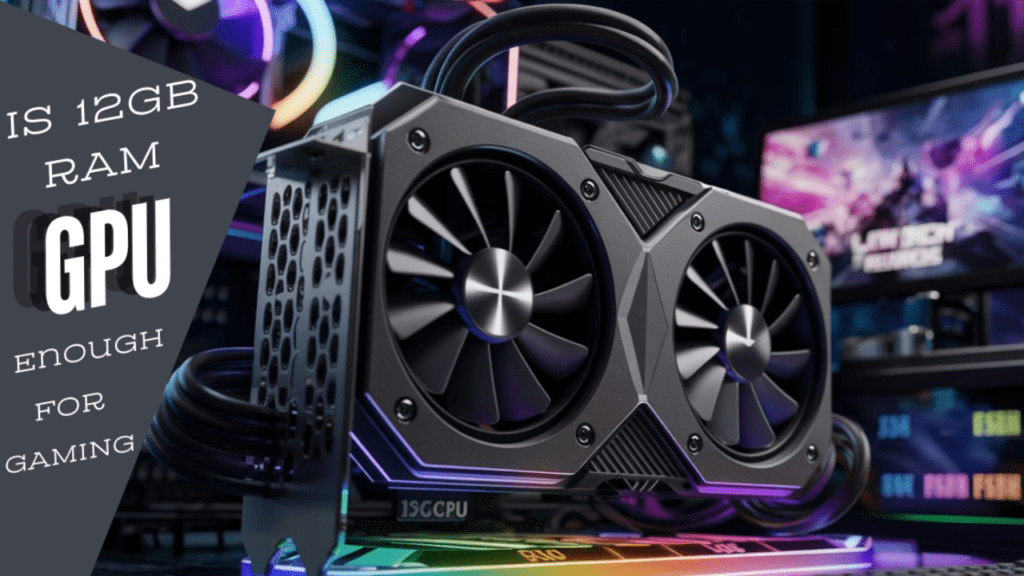
In recent years, gamers have been treated to an influx of powerful graphics processing units (GPUs) promising enhanced performance, stunning visuals, and immersive gaming experiences. Amid this sea of choices, a common question persists: “Is a 12GB GPU enough for gaming?” Let’s dive into the complexities and considerations involved in this pivotal decision.
Understanding GPU Memory
Before we delve into the specifics of whether 12GB is sufficient, it’s crucial to grasp what GPU memory, also known as VRAM (Video Random Access Memory), does. VRAM is responsible for storing and managing data that the GPU needs to render images, textures, and other graphical elements in real time. The more VRAM a GPU has, the more data it can handle, which translates to better performance in high-resolution and graphically demanding games.
Factors Influencing GPU Requirements
1. Game Resolution
One of the most significant factors determining the VRAM requirement is the resolution at which you intend to game. Higher resolutions, such as 1440p or 4K, require more VRAM to store the larger textures and assets that make these visuals possible. At 1080p, a 12GB GPU will suffice for most modern titles. However, as you climb to 4K, the need for additional VRAM becomes more pronounced.
2. Game Graphics Settings
Modern games offer a range of graphics settings, from low to ultra. Games with ultra settings typically demand more VRAM to accommodate higher-quality textures, shadows, and other graphical elements. While a 12GB GPU can handle high settings in many titles, pushing to ultra settings in the latest AAA games might strain the memory capacity.
3. Future-Proofing
The gaming industry evolves rapidly, with developers continually pushing the boundaries of graphical fidelity. A GPU with 12GB of VRAM might be sufficient for today’s games, but consider future releases. Investing in a GPU with more VRAM could ensure your system remains capable of running upcoming titles smoothly for years to come.
Specific Use Cases
1. Esports and Competitive Gaming
For those primarily engaging in esports and competitive gaming, where frame rates and responsiveness are paramount, a 12GB GPU is more than adequate. These games are generally optimized for performance and run smoothly at high settings even with mid-range GPUs.
2. VR and Augmented Reality
Virtual reality (VR) and augmented reality (AR) demand high performance and ample VRAM due to the need for rendering two simultaneous images (one for each eye). While a 12GB GPU can manage many VR and AR applications, developers’ growing ambitions might soon necessitate more powerful hardware.
Comparing Popular 12GB GPUs
NVIDIA GeForce RTX 3060
The NVIDIA GeForce RTX 3060 is a popular 12GB GPU known for its balance of performance and affordability. It handles most modern games at 1080p and 1440p with high settings, offering an excellent choice for budget-conscious gamers.
AMD Radeon RX 6700 XT
Another contender in the 12GB category is the AMD Radeon RX 6700 XT. It competes well with NVIDIA’s offerings, providing solid performance at 1080p and 1440p. It also supports ray tracing, a feature that enhances visual realism in games that support it.
FAQs
Is a 12GB GPU future-proof?
- While a 12GB GPU is adequate for today’s games, future-proofing your system might involve considering GPUs with higher VRAM capacities. Game developers continually push the envelope, and having extra VRAM ensures better performance in future titles.
Can a 12GB GPU handle 4K gaming?
- At 4K resolution, a 12GB GPU might struggle to maintain consistent frame rates in the latest AAA games at ultra settings. However, it can still offer a decent experience at high settings or with some graphical tweaks.
What is the main advantage of having more VRAM?
- More VRAM allows a GPU to handle larger textures and more complex assets, reducing stuttering and frame drops in graphically intensive scenes. It ensures smoother gameplay and better visual fidelity.
Is VRAM the only factor determining GPU performance?
- No, VRAM is just one aspect. The GPU’s architecture, clock speeds, and other features like ray tracing and DLSS (Deep Learning Super Sampling) also significantly impact performance.
Should I prioritize VRAM when buying a GPU?
- While VRAM is essential, it’s crucial to balance it with other GPU specifications and your specific gaming needs. Consider factors such as resolution, preferred graphics settings, and the types of games you play.
Conclusion
A 12GB GPU offers a solid middle ground for gamers seeking a balance between performance and cost. It can handle most modern games at high settings and is suitable for competitive gaming, VR, and other demanding applications.
However, for those looking to future-proof their setup or push the boundaries of graphical fidelity, exploring GPUs with higher VRAM might be the way forward. In the ever-evolving world of gaming, staying informed and making well-rounded decisions will ensure an enjoyable and immersive gaming experience.